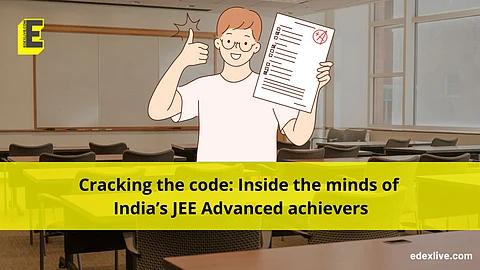

The gates to India’s most prestigious engineering institutions creaked open once more today, as Indian Institute of Technology (IIT) Kanpur, the organising body for this year, announced the results of Joint Entrance Examination (JEE) Advanced 2025.
The JEE Advanced represents the apex of India's engineering entrance ecosystem, accessible only to those who have already proven their merit by clearing the preliminary JEE Main hurdle.
This two-tiered filtration system creates a unique dynamic: by the time students reach the Advanced stage, they are not merely competing against the general population, but against a pre-selected cohort of academically accomplished peers.
The examination thus becomes less about basic competency and more about demonstrating exceptional depth, analytical agility, and the ability to synthesise complex concepts under extreme pressure.
Out of 1,87,223 students who sat for the rigorous two-paper exam on May 18, just 54,378 made the cut.
At the summit stood Rajit Gupta with a stellar 332 out of 360.
But behind these numbers lies a more profound narrative of human resilience, strategic thinking, and the quiet discipline that transforms aspirations into achievements.
Kedar Nayak (AIR 8735) and Vedant Sharad (AIR 3840), both from Arihant Academy, exemplify this journey.
Their journey through JEE Advanced 2025 reveals insights that transcend mere academic strategy, touching the very essence of what it means to persist when the stakes are impossibly high.
For Nayak, the moment of result declaration was "overwhelming whirlwind of emotions" that validated years of showing up regardless of mood or motivation. His approach was simple yet profoundly effective, “treating his study schedule as a commitment, not a suggestion.”
He explains, "Even on days when I didn't feel like studying, I showed up and put in the hours."
Vedant took a different approach, focusing on variety rather than repetition. "I solved problems from multiple sources, which helped me understand the same concepts from different perspectives," he says.
His 11-12 hour daily routine emphasised what he calls "problem-solving flexibility."
The transition from JEE Main to Advanced demanded more than just increased study hours. Both candidates recognised that Advanced required a fundamental shift in thinking, from speed-focused execution to depth-oriented analysis.
Nayak found value in an unconventional strategy. "I solved many JEE Main papers from different sessions and previous year question papers. They cover a wide variety of question styles, and that added to my confidence," he shares. This underscored his belief in building a nuanced understanding through broad exposure and pattern recognition.
Looking back, both have clear advice for future aspirants. "I would've addressed my weak areas much earlier in the process," Nayak admits. "I had a tendency to postpone working on topics I found difficult."
Vedant echoes this sentiment, saying, "I would focus more on clearing my doubts immediately instead of postponing them."
These insights reveal a crucial truth; preparation anxiety often stems from avoidance rather than inadequacy.
The psychological dimension of their success cannot be understated. When it came to managing stress, both found simple solutions worked best.
Nayak relied on conversations with teachers, friends, and family as his "emotional reset button," while Vedant drew motivation from his internal compass, letting consistency itself become his source of mental stability.
Their approach to coaching versus self-study reveals mature pragmatism. Rather than engaging in the tired debate of one versus the other, both recognised that coaching provides structure while self-study builds ownership.
This balanced perspective reflects an understanding that success in high-stakes environments requires both external guidance and internal drive.
Most importantly, they actively dispel the myth that JEE Advanced requires genius-level intellect. With cut-offs typically around 30-40% of total marks, the examination rewards strategic thinking and consistency over raw intellectual prowess.
Their message is clear, “the barrier to entry is not superhuman ability, but superhuman discipline.”
As they now contemplate their futures, Nayak exploring artificial intelligence (AI) and sustainable technology, Vedant focusing on computer science innovation, their stories serve as compelling evidence that success in India's most competitive academic arena is not about being extraordinary but about being extraordinarily committed to ordinary, daily excellence.
Their journey reminds us that behind every rank and every number lies a very human story of showing up, day after day, until dreams become reality.
